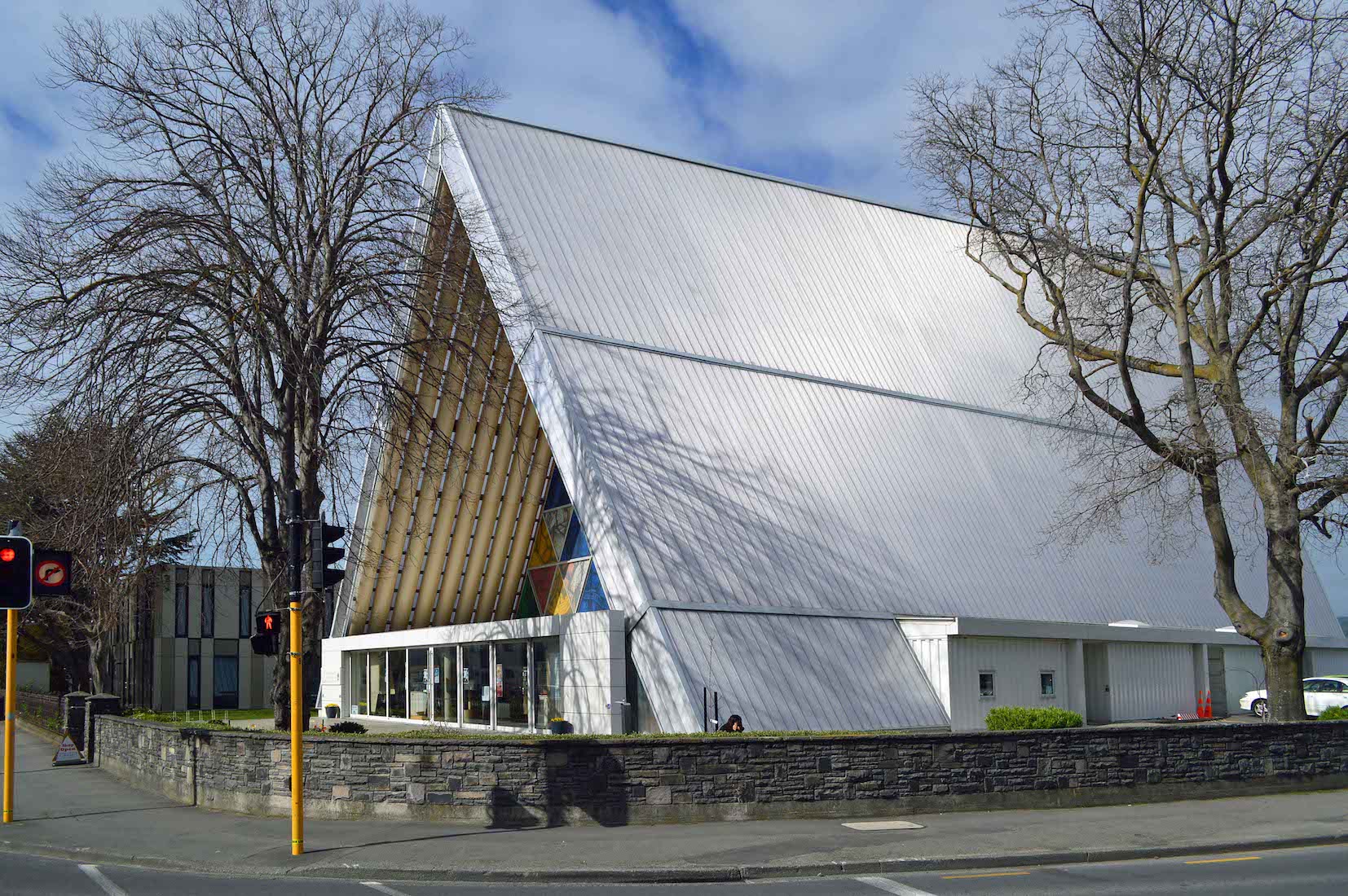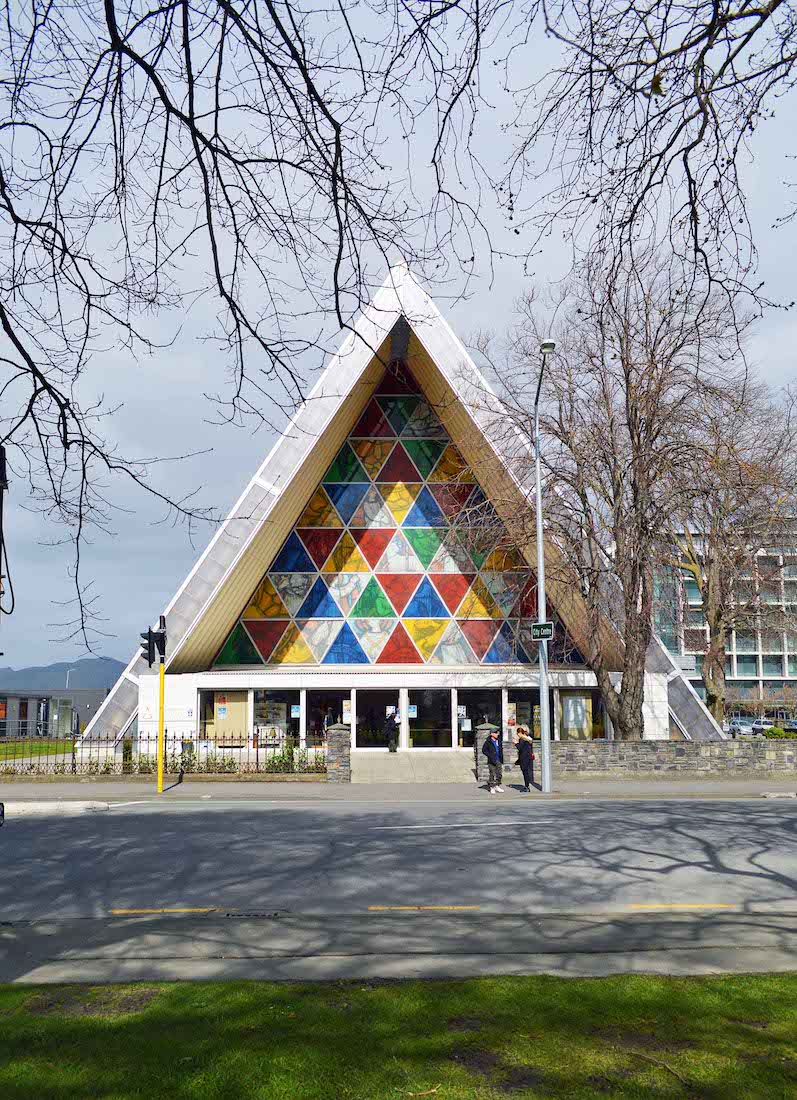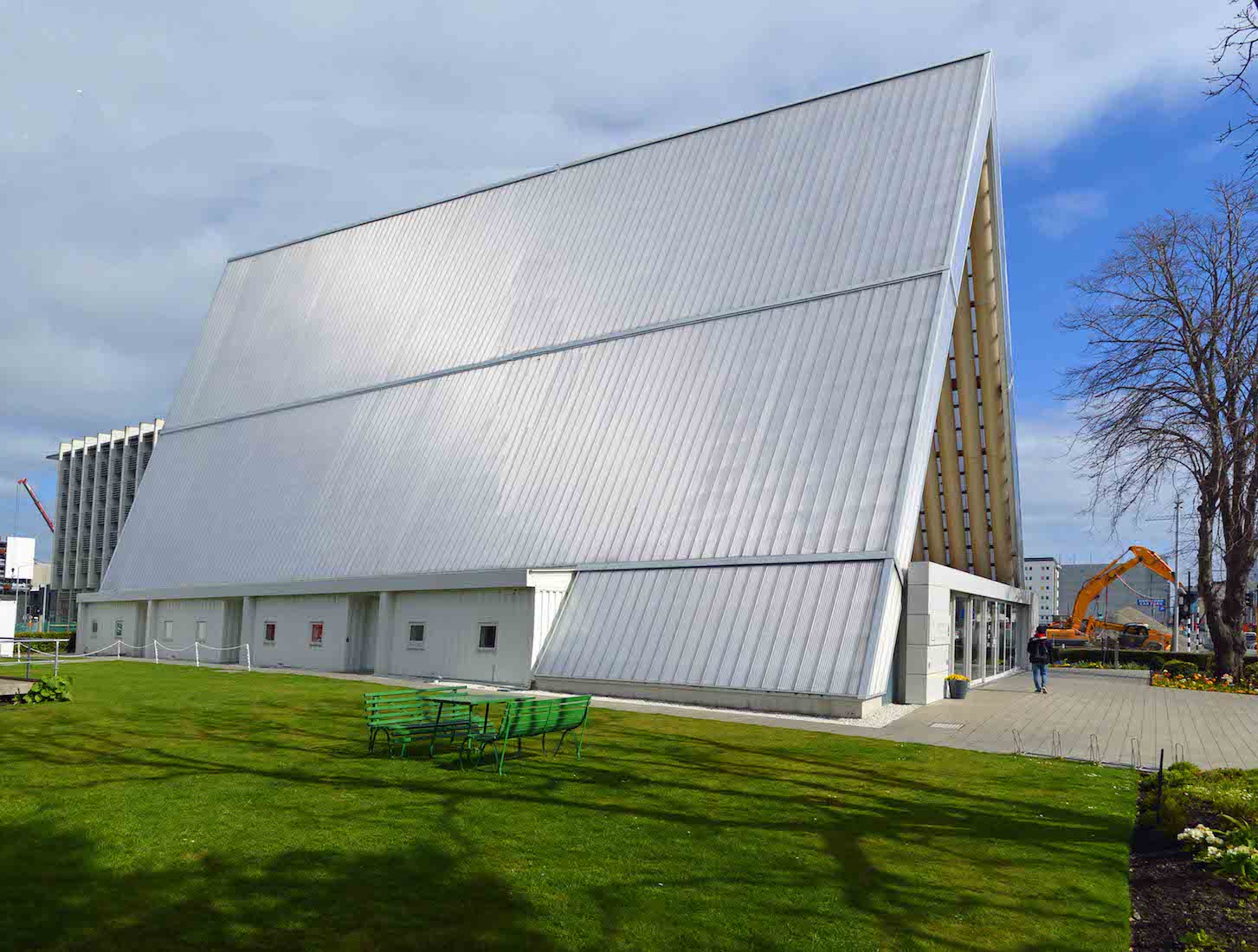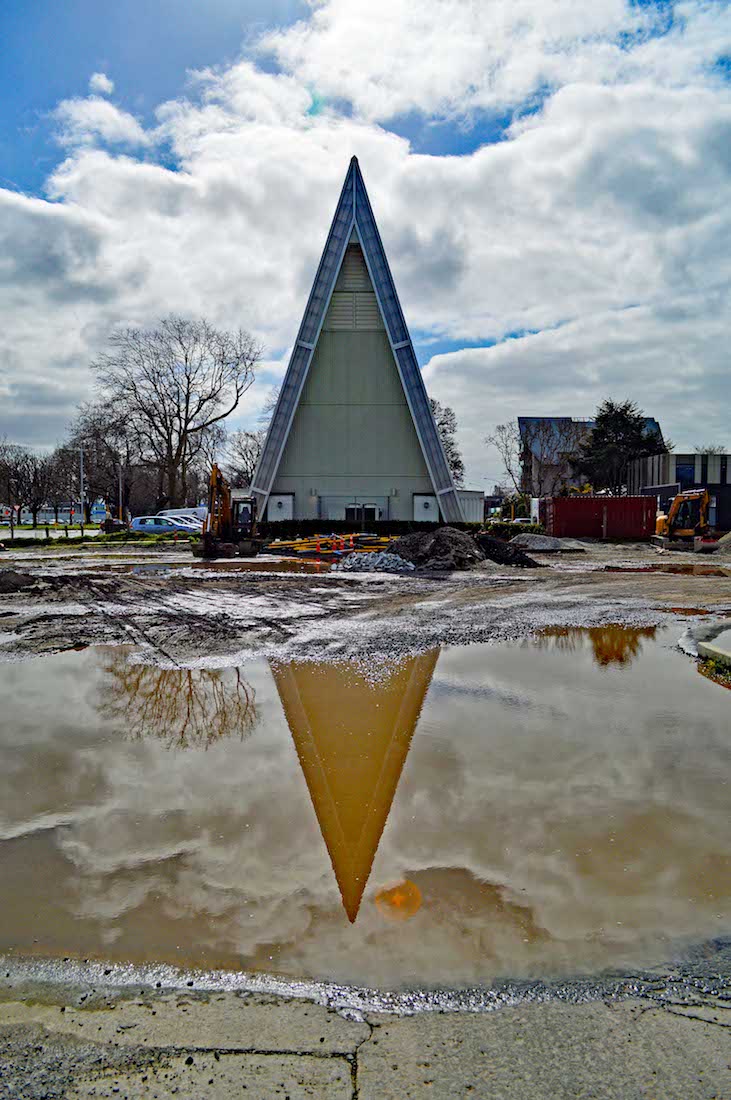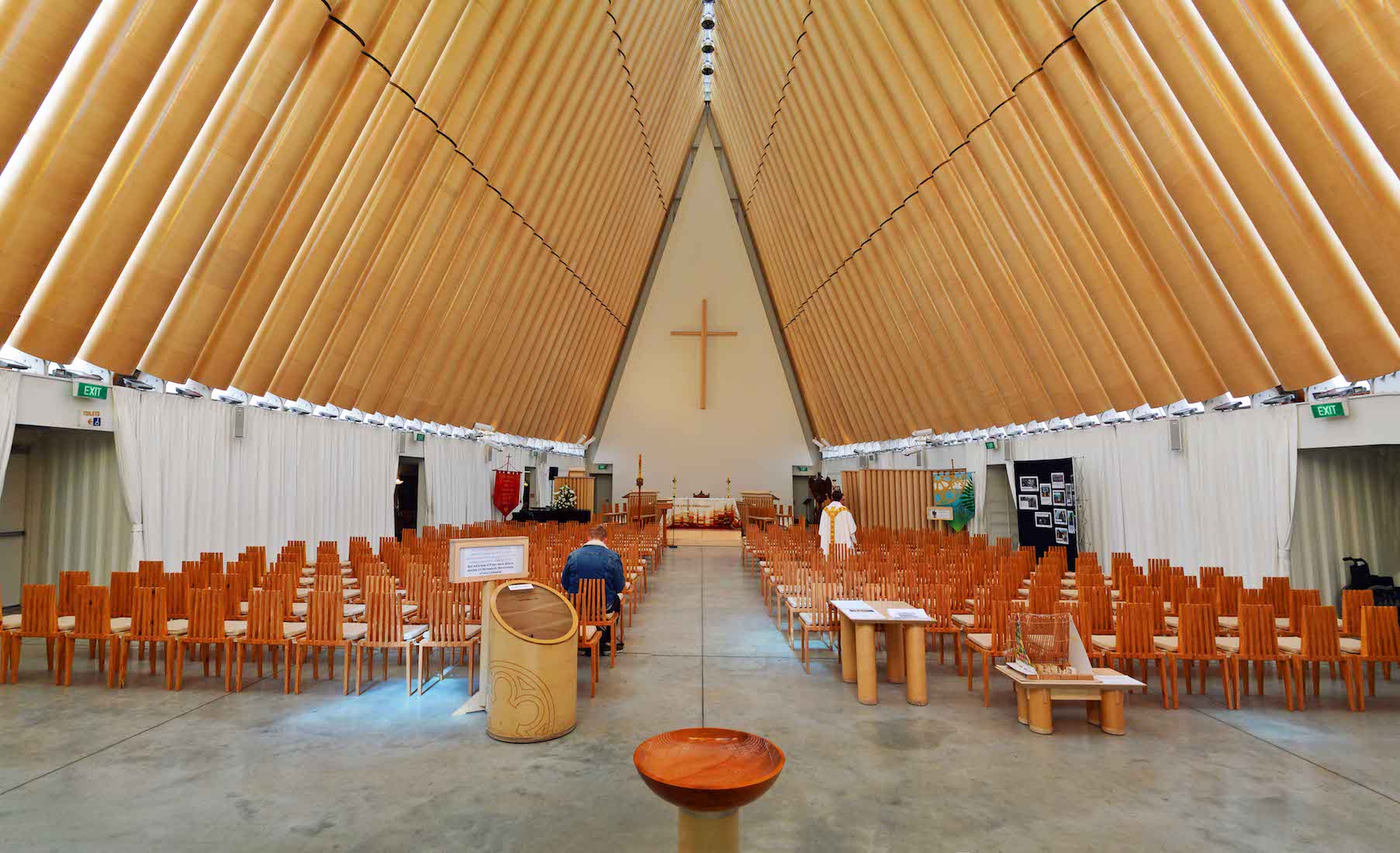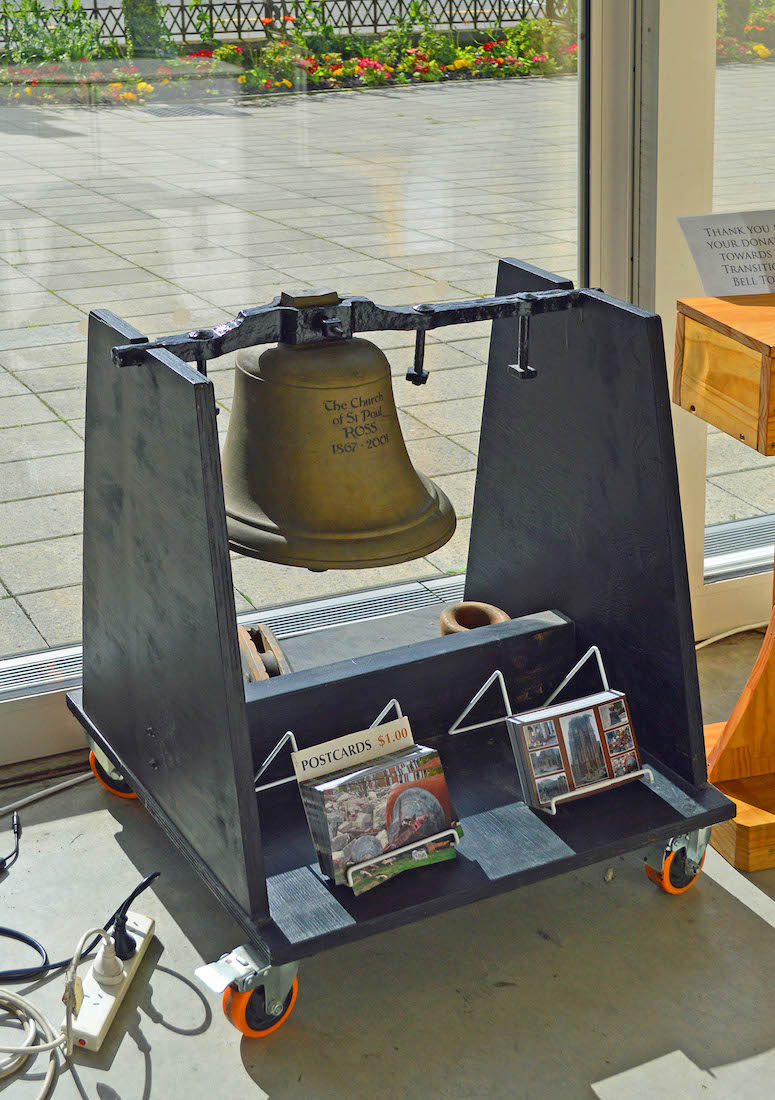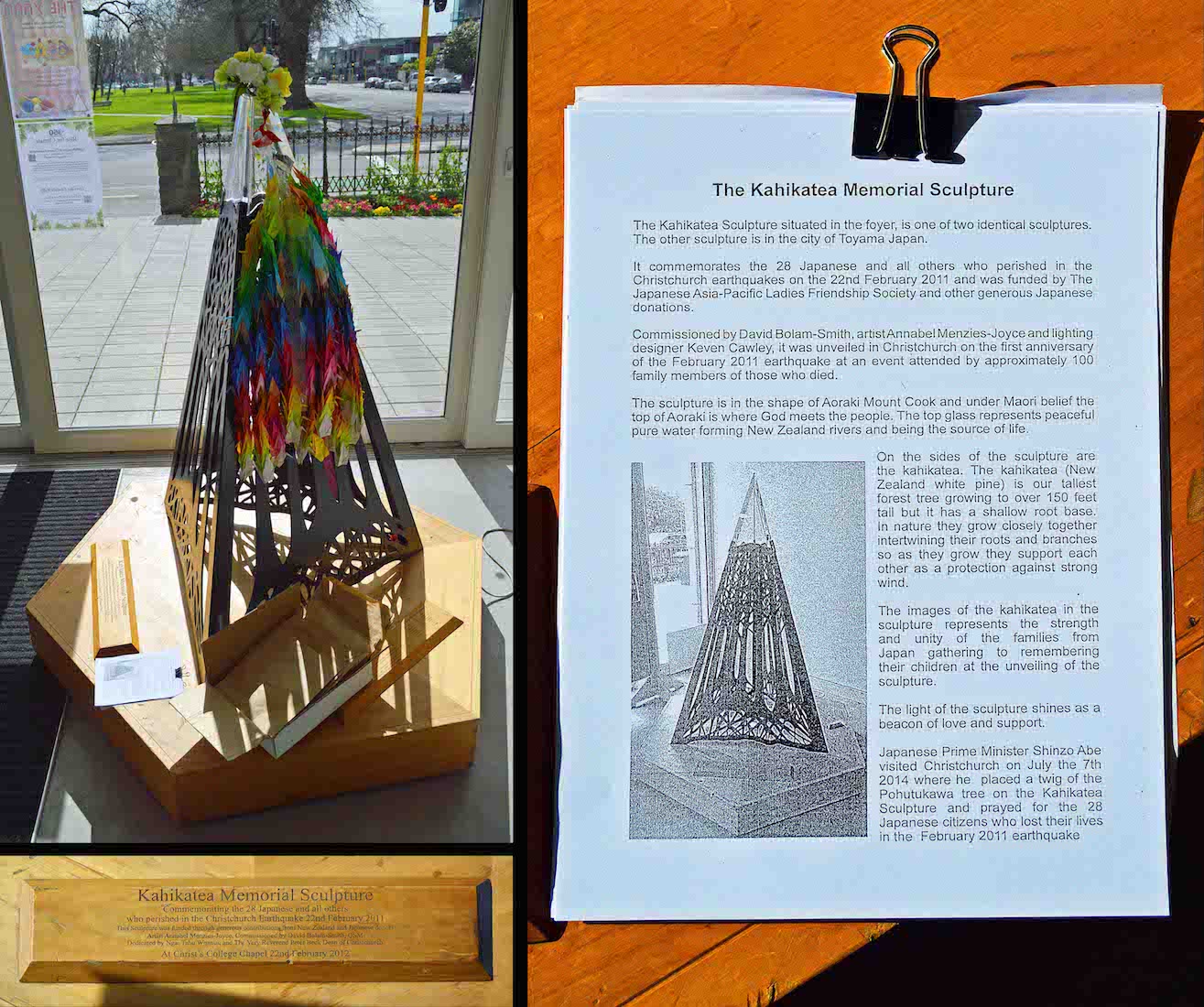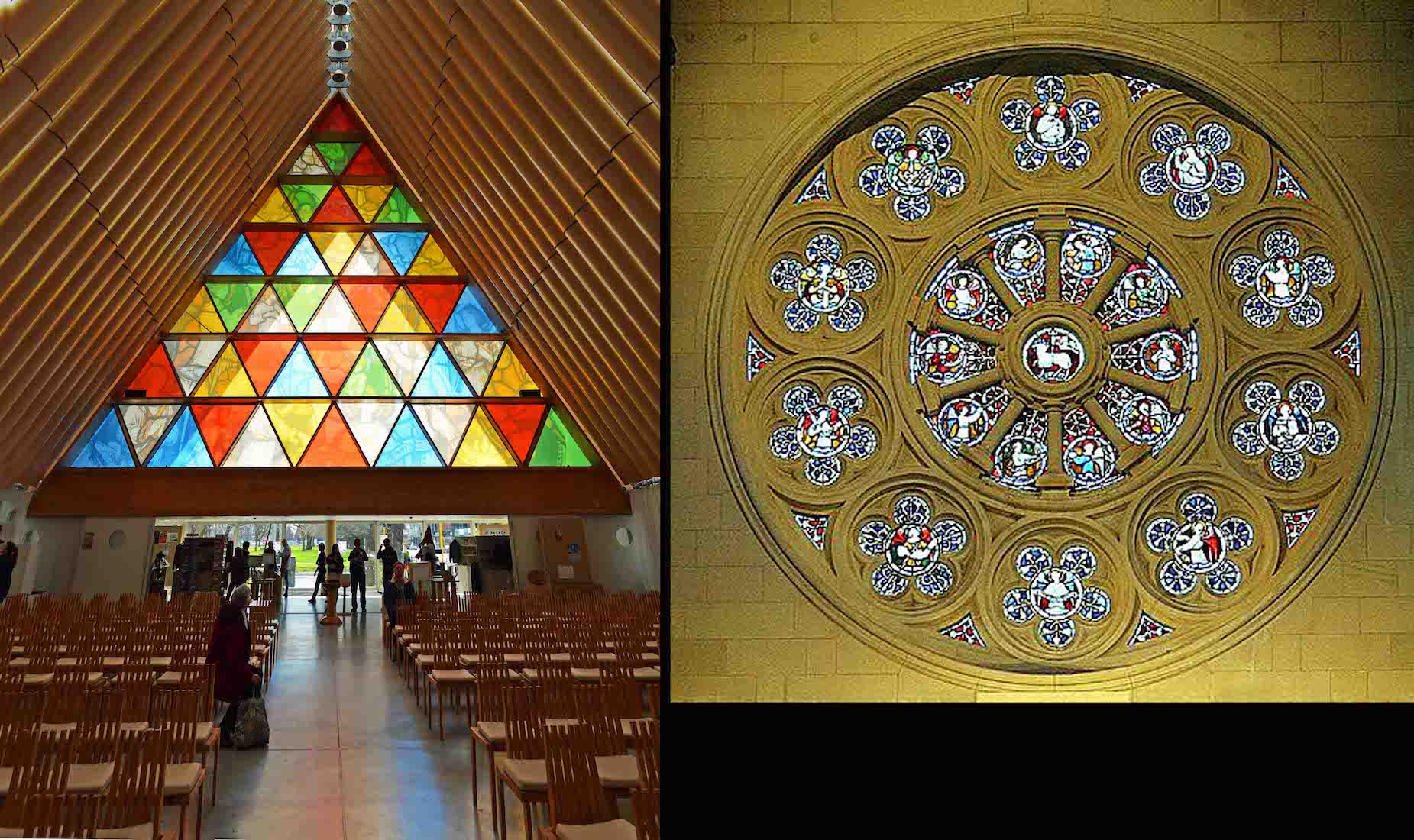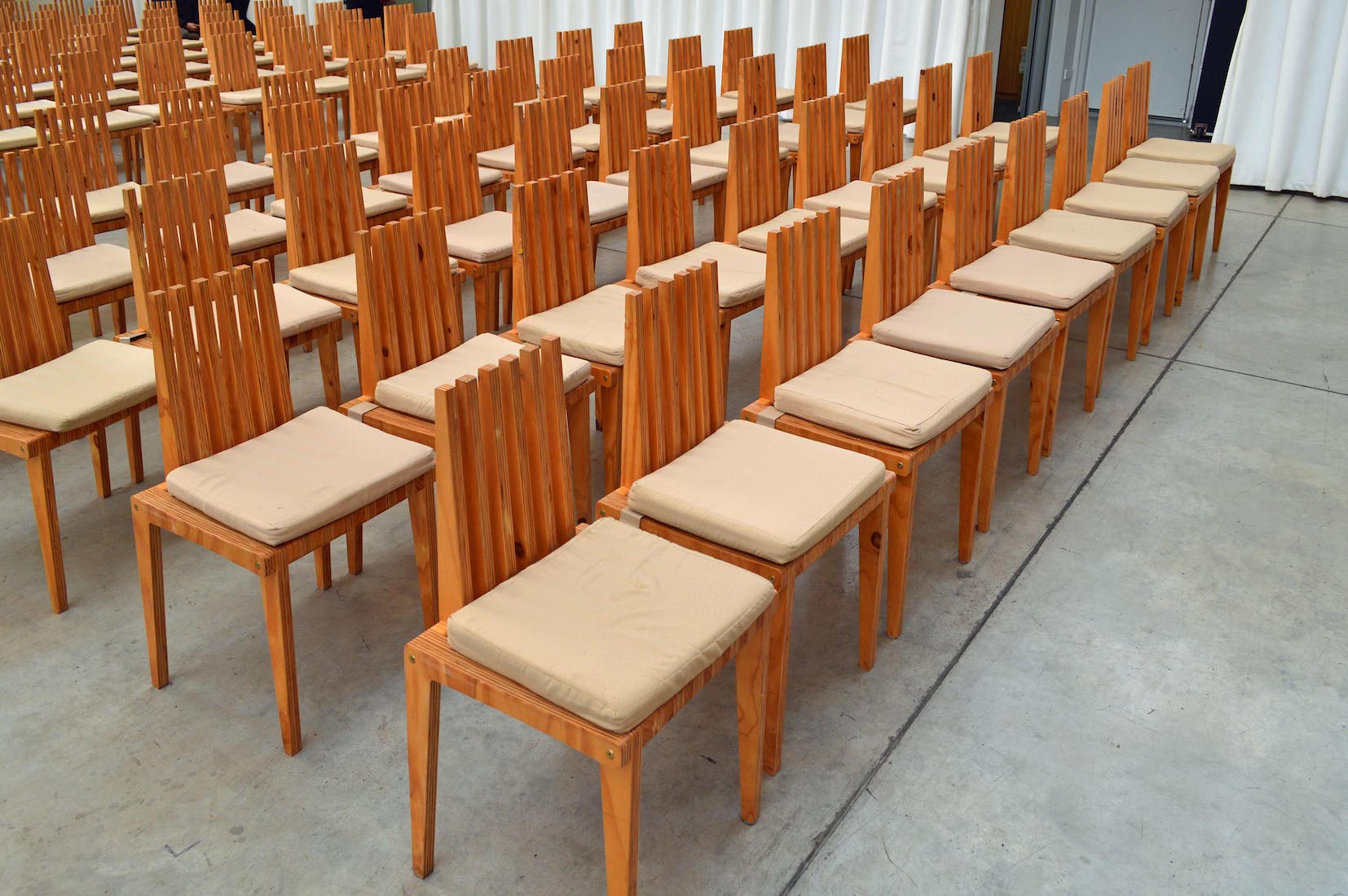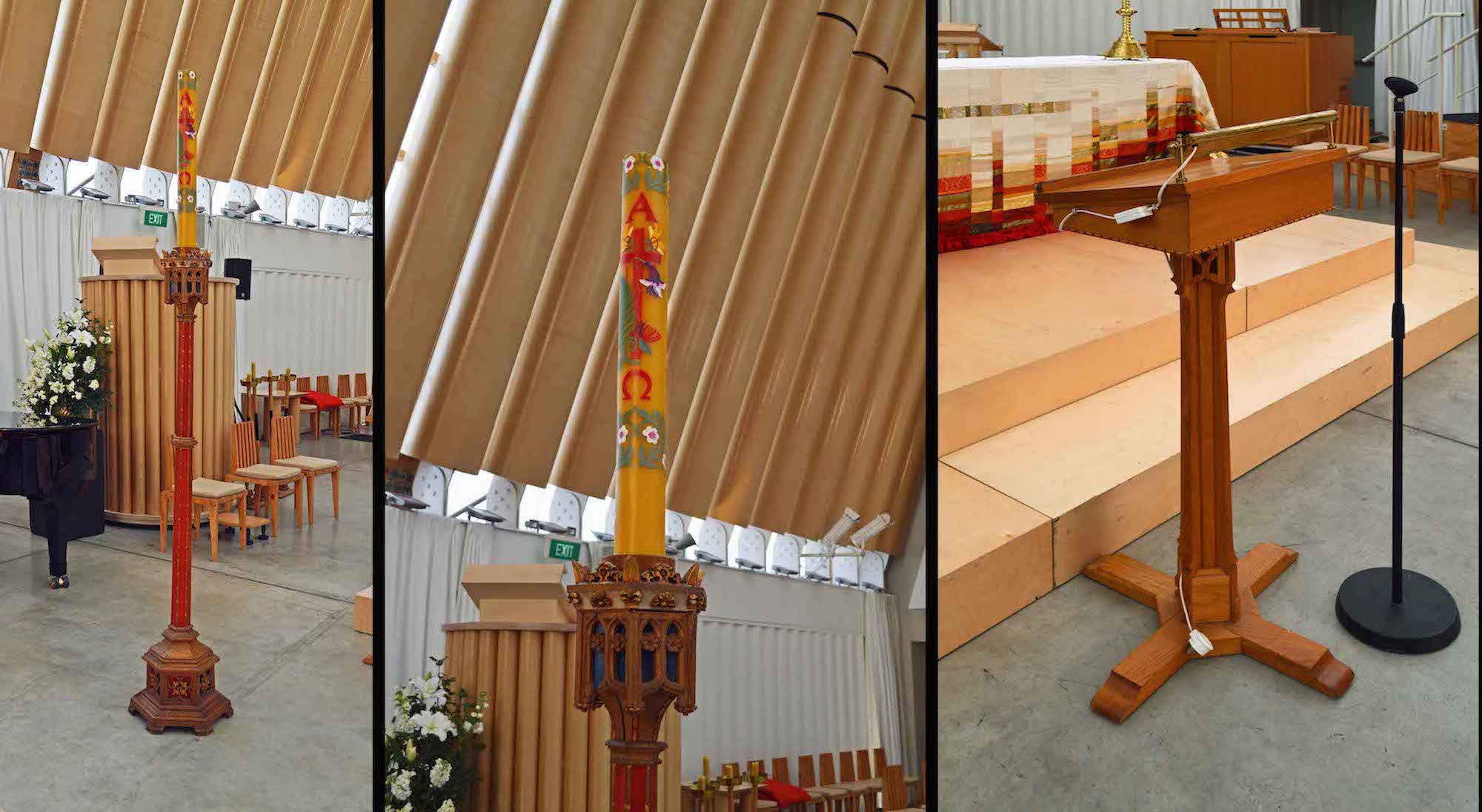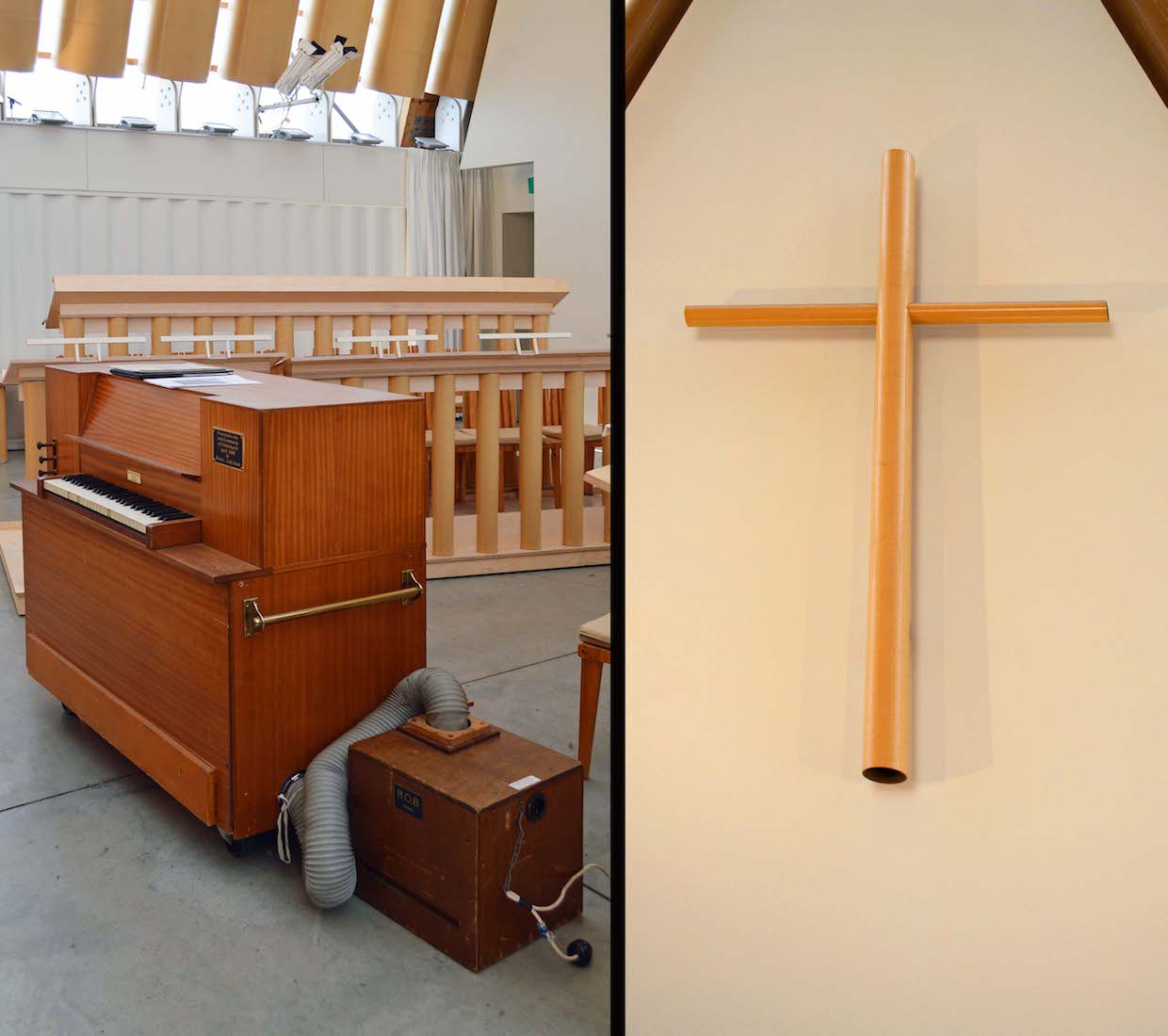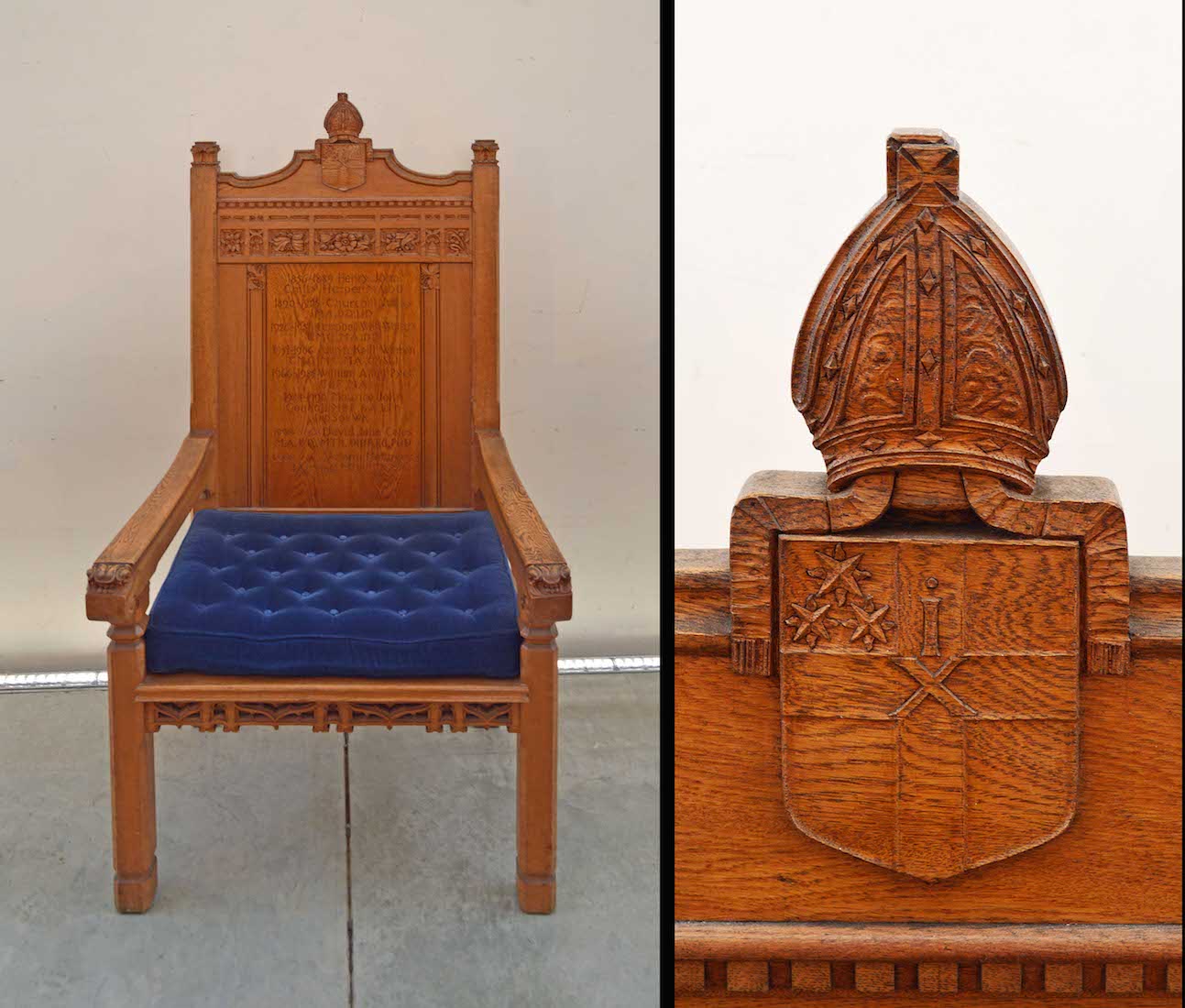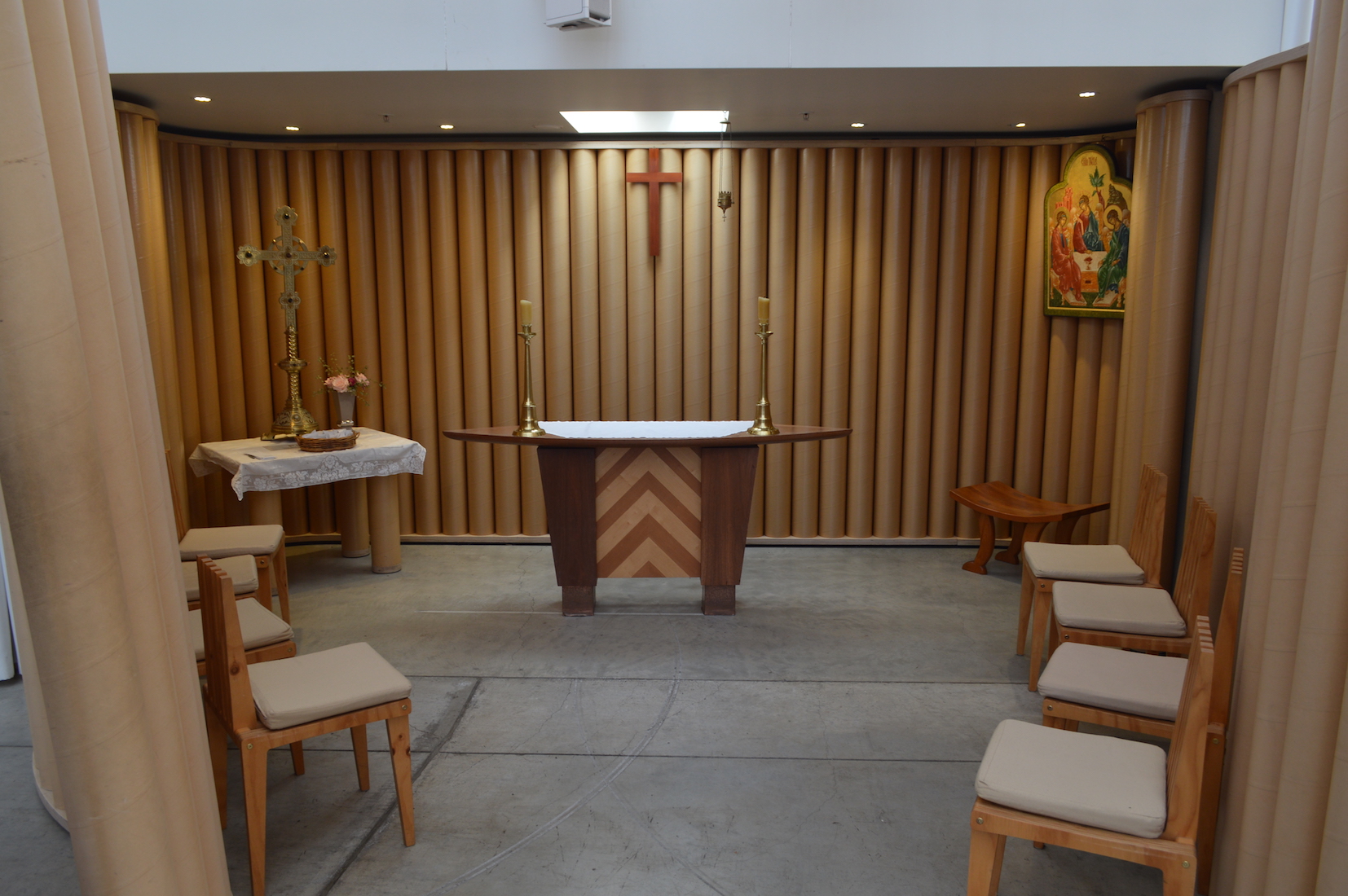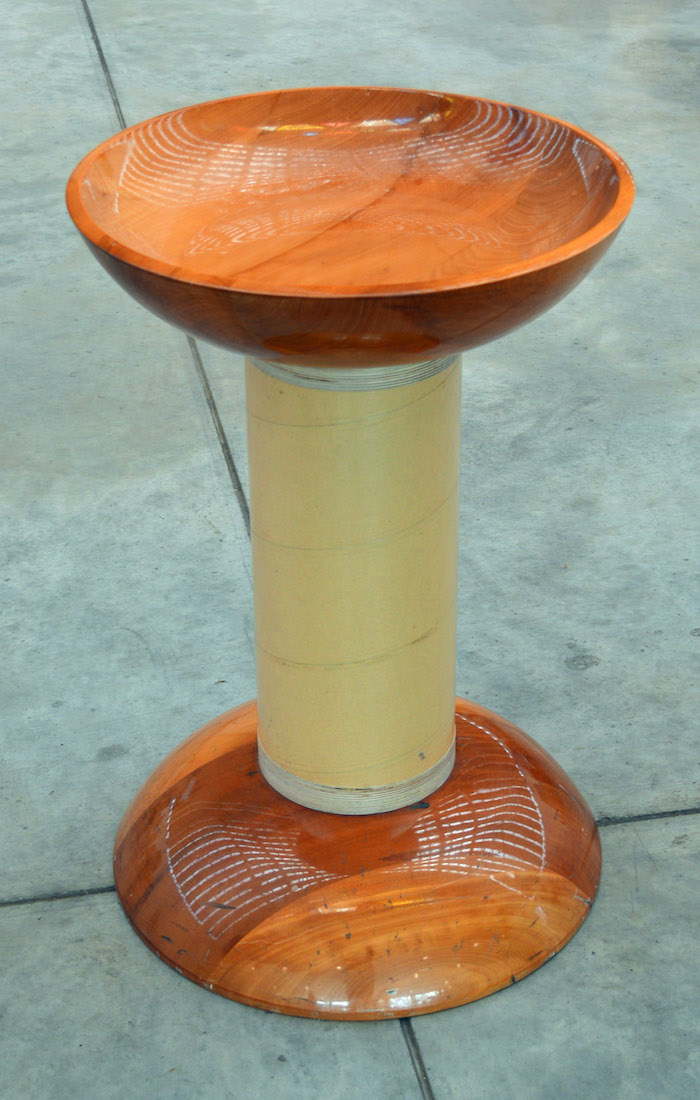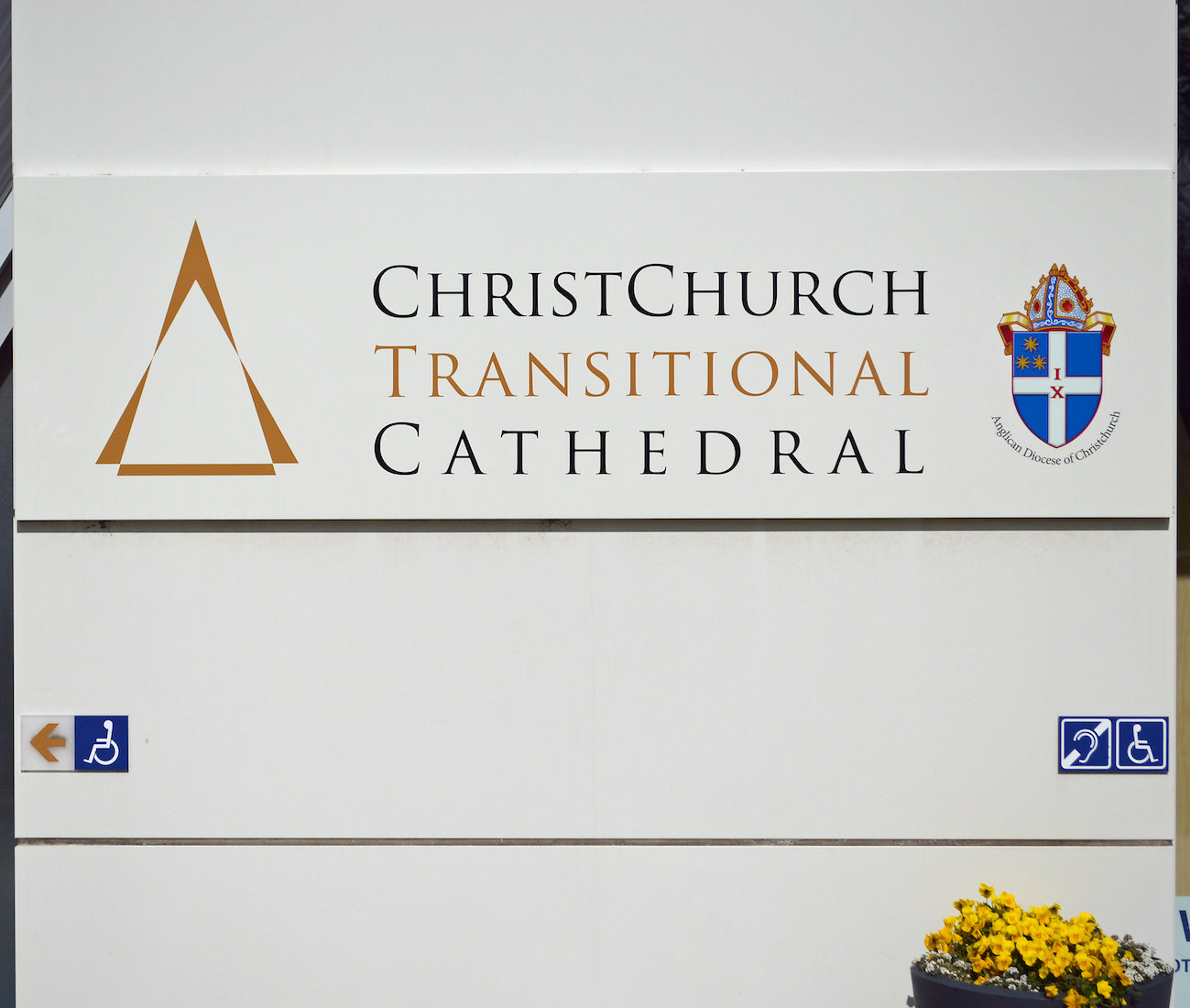21. THE TRANSITIONAL CATHEDRAL
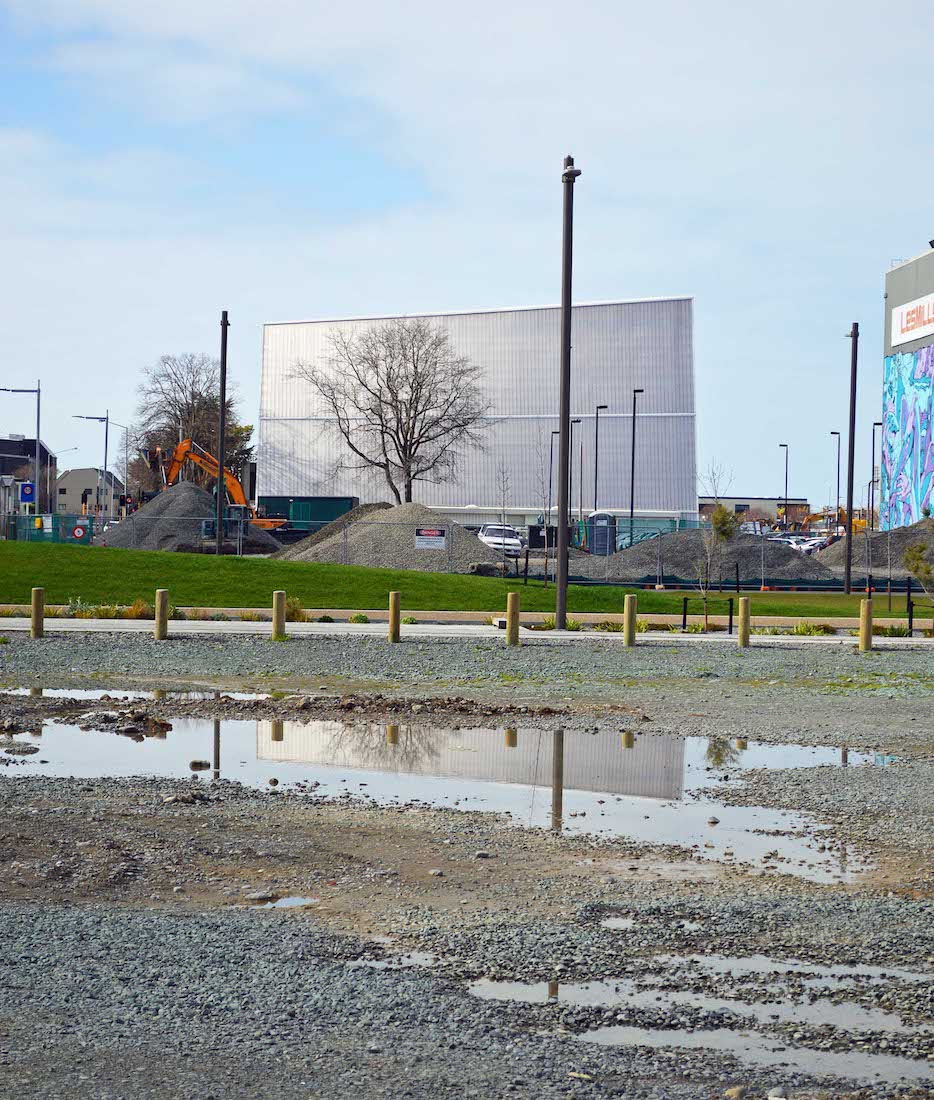
We walk a little way along nearby Hereford Street to come to the Transitional Cathedral, also known as the Cardboard Cathedral. This is the transitional pro-cathedral of the Anglican Diocese of Christchurch opened in August 2013. It was designed by architect Shigeru Ban and seats around 700 people. PLAN
22. MORE RECONSTRUCTUON
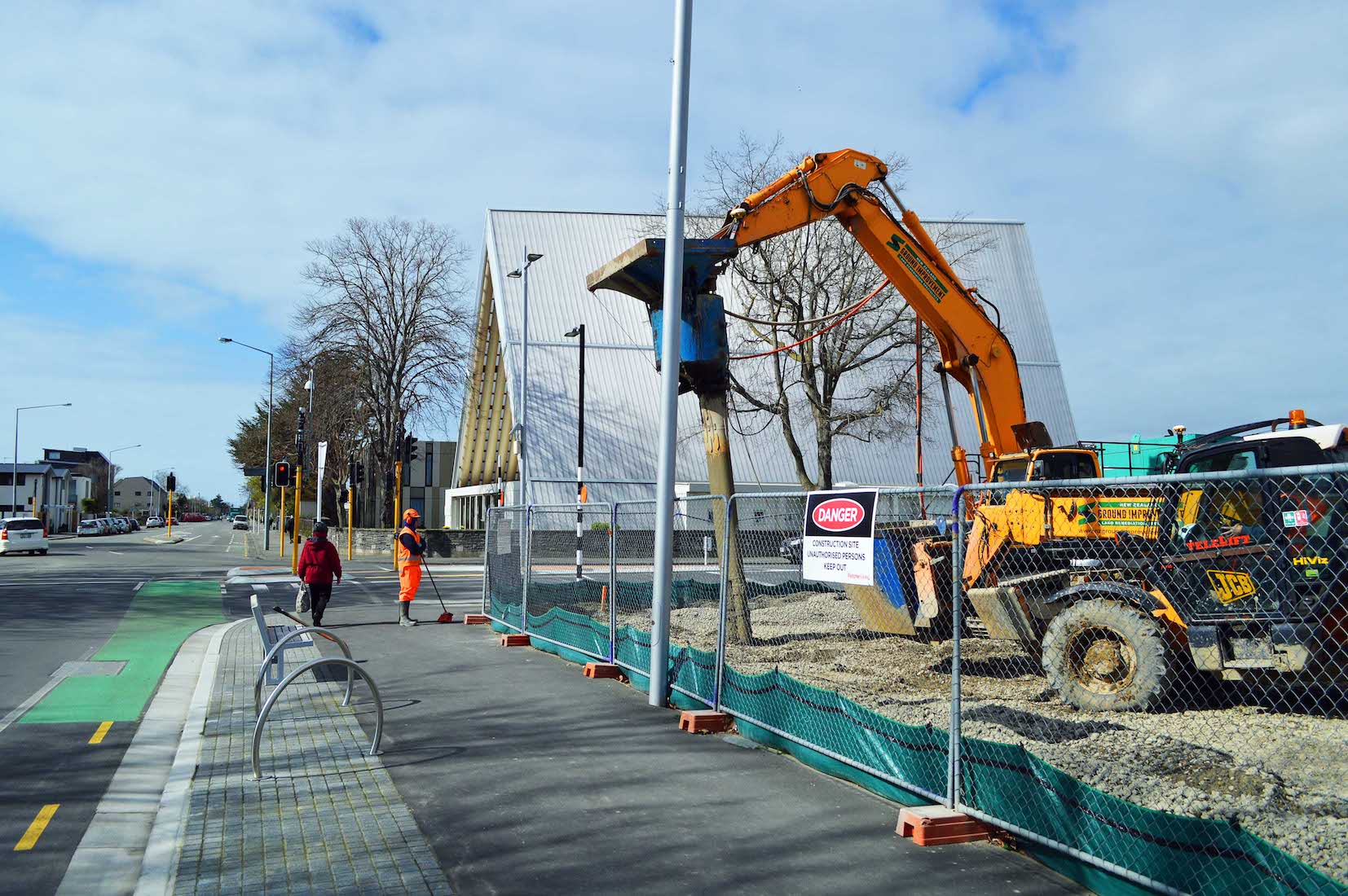
The building is on a section allocated to the Anglican church in Christchurch's original 1850 survey opposite Latimer Square. It was originally the site of St John the Baptist Church, the first church built in permanent materials by Anglicans in Christchurch, which was demolished after the 2011 Christchurch earthquake. The St John parish gave the land, and in return can use the building and will keep it once a permanent cathedral can be used.
23. SOUTHWEST VIEW
Initially it was hoped to have the Cathedral open in February 2012 for the first earthquake anniversary. A-frame in style, rising 24 metres (79 ft), it would incorporate 98 cardboard tubes of 500 kilograms (1,100 lb) each atop 6 metres (20 ft) long containers. However, it was not until April 2012 that the site was blessed, and construction began on 24 July 2012. Once the decision had been made that the building would remain for St John parish, it was constructed as a permanent structure.
24. FRONT OF THE CARDBOARD CATHEDRAL
The Cardboard Cathedral is simple in structure, but externally quite striking, especially from the front. The building has a triangular profile constructed from the equally sized cardboard tubes. These surround a triangular glass window made from tessellating triangles of various colours.
25. NORTHERN VIEW
Since the building is A-frame in construction, one might expect the sloping faces to be rectangular. However, while the front profile is an equilateral triangle, the rear profile is a rather higher and narrower isosceles triangle – a feature not well illustrated in this photograph! On either side, the sloping tubes are supported at their base on a line of shipping containers which are used for chapel and office spce.
26. FROM THE BACK
The difference in end profile is better illustrated here. I am struck by the fact that this Cathedral seems to have been constructed in a desolate wasteland – a sign of hope for the future of this city.
27. NAVE
We enter through the front doors and look down the nave. Ahead is the altar and above it the large cross. The cardboard tubes and the unusual wooden seating give a feeling of warmth. This is a light and airy space which draws one in. Light enters from the triangular window, but also through spaces between the cardboard tubes. A simple baptismal font is in the foreground.
28. OLD BELL
The front doors lead into a spacious meeting area. To our right is a small shop, and to our left a display of various items of interest. One of these is an old bell inscribed with the text: ‘Church of St Paul // Ross // 1867 – 2001'. There is a little town called Ross on the West Coast ... ?
29. MEMORIAL SCULPTURE
Also on display here is this Kahikatea Memorial Sculptire. Kahikatea is a New Zealand native timber. The sculpture commemorates the 28 Japanese and all others who perished in the Christchurch earthquake 22nd February 2011. It is in the shape of Aoraki Mount Cook, and under Maori belief the top of Aoraki is where God meets the people.
30. COLOURED TRIANGLE
The wall of the nave above the entrance is largely made up of the spectacular triangular glass window. This main window is formed of 49 tessellating triangular pieces of stained glass incorporating images from the original cathedral’s rose window, the only clear link between the two buildings. [Photo Credit: Rose Window : Cathedral]
31. CATHEDRAL CHAIRS
The pews are simple stylish individual chairs, linked together, and made from locally sourced wood to seat 700 people.
32. PASCHAL CANDLE AND LECTERN
Close to the altar is a Paschal candle and a small lectern. The Paschal candle illustrates that Christ is the light of the world, and is lit especially around Easter. The small lectern is obviously used, perhaps in the leading of services.
33. ALTAR
The altar with its two candlesticks is placed directly below the sanctuary cross. It is from here that the Eucharist is administered during a Sunday service. The word ‘altar’ brings to mind the sacrifice of Christ which is the foundation of the Christian faith.
34. SMALL ORGAN AND CROSS
At the front of the Cathedral is a grand piano, and also a small organ. Many cathedrals have an ‘extra’ organ for use with the choir. A large simple cross is displayed on the front wall: a reminder that Christ died for us.
35. ORGAN AND EAGLE LECTERN
A larger electronic organ provides music for the Cathedral. The Rodgers 484 organ has 4 manuals and 84 main stops, plus 178 Voice Palette stops for a total of 262 real-time available stops, equivalent to 398 pipe ranks. Library Access provides an additional 180 real-time stops and voices, equivalent to 235 pipe ranks. Next to it is a wonderfully carved eagle lectern with four angels at the base. This was designed by Jones & Willis of London and given as a gift to the Church in 1881.
36. CATHEDRA
The modest chair or throne of the Bishop has the Latin name ‘cathedra’, which is where the title ‘Cathedral’ comes from. On the back of the chair is a Bishop’s mitre and the crest of the Christchurch Anglican Diocese. The shield bears a cross and the letters IX which stand for Jesus Christ. The three stars may allude to NZ as the ‘triple star’ as in the National Anthem, probably referring to the three islands.
37. BANNER AND PULPIT
At right front there stands a pulpit constructed of smaller cardboard tubes, and a banner proclaiming: ‘My house shall be called a house of prayer for all people’ (Isaiah 56:7).
38. SIDE CHAPEL
A small chapel lined with cardboard tubes opens off the nave on the pulpit side. At centre there is an altar with two candles, and a cross above. At left is a small table with an ornate cross. And at right a well known icon.
39. CROSS, ALTAR, ICON
We notice that the altar picks up the triangular cross-section in the Cathedral design. More interesting is the gem-studded cross at left, presumably rescued from the old Cathedral. At right is an icon which is a copy of Troitsa (The Hospitality of Abraham), an icon created by Russian painter Andrei Rublev in the 15th century. The icon depicts the three angels who visited Abraham at the Oak of Mamre (Genesis 18:1–8), but the painting is full of symbolism and is interpreted as an icon of the Holy Trinity.
40. BANNER, CWS DISPLAY
Close by the side chapel is this banner and CWS display. CWS stands for Christian World Service. CWS is the international aid and development agency of Protestant Churches of New Zealand. Established in 1945 to help in war-torn Europe, CWS now has 73 years experience of helping communities survive disaster, challenge injustices and overcome poverty. I can find no information on the banner.
41. BAPTISMAL FONT
Standing right at the entrance in the central aisle is this very simple baptismal font. Baptism is seen as the rite of entry to the Christian life and to the Cathedral community. This font has a design which fits with the Cardboard Cathedral.
42. TRANSITIONAL?
Transitional? Where to from here? While there is agreement that the old Cathedral will be reinstated, I suspect that the way forward will not be straight! Too many powerful interests, and too much finance required ... . My prayer is for a good outcome. This completes our tour of the Christchurch Anglican Cathedrals.
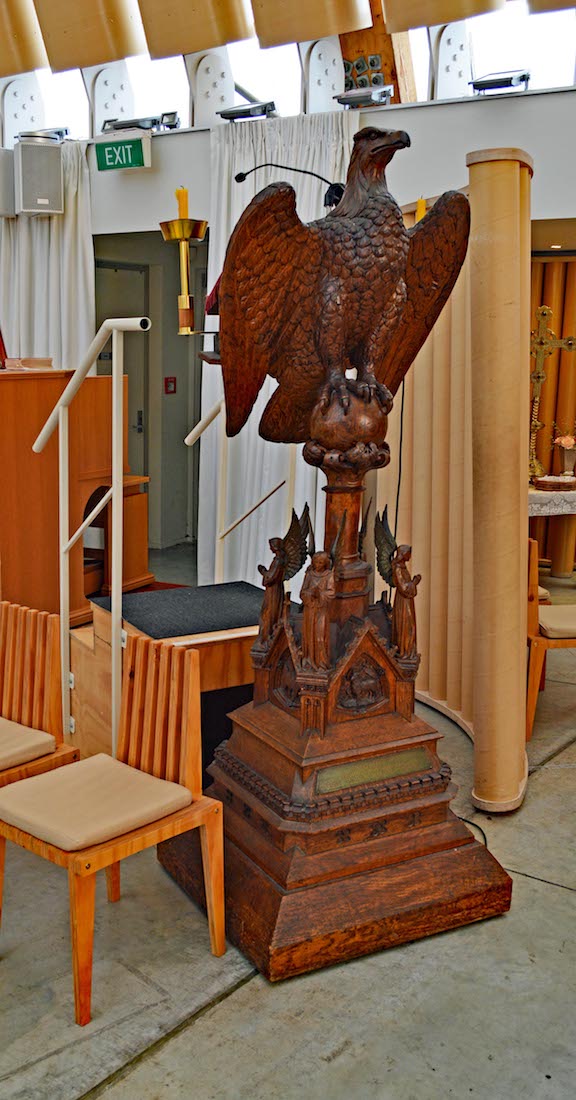
CONCLUSION
I remember Christchurch in much happier times from a previous visit well before the earthquake, so I found this visit quite emotional and sad. I hope you have been interested in sharing this cathedral experience.
As usual I am very happy to receive comments and corrections to the site. There are several places where further information would be helpful. The 2018 photos on this site are all mine, and older photos are acknowledged in the text. I take little credit for the text which has been heavily dependent on
https://wiki2.org/en/ChristChurch_Cathedral,_Christchurch
and
https://wiki2.org/en/Cardboard_Cathedral
I happily acknowledge these sources amongst others.
My photographs which appear on this site can also be found in higher resolution at:
https://www.flickr.com/photos/paulscottinfo/sets/
Paul Scott Site created 10 / 2018 ; reformatted 06 / 2020 .

